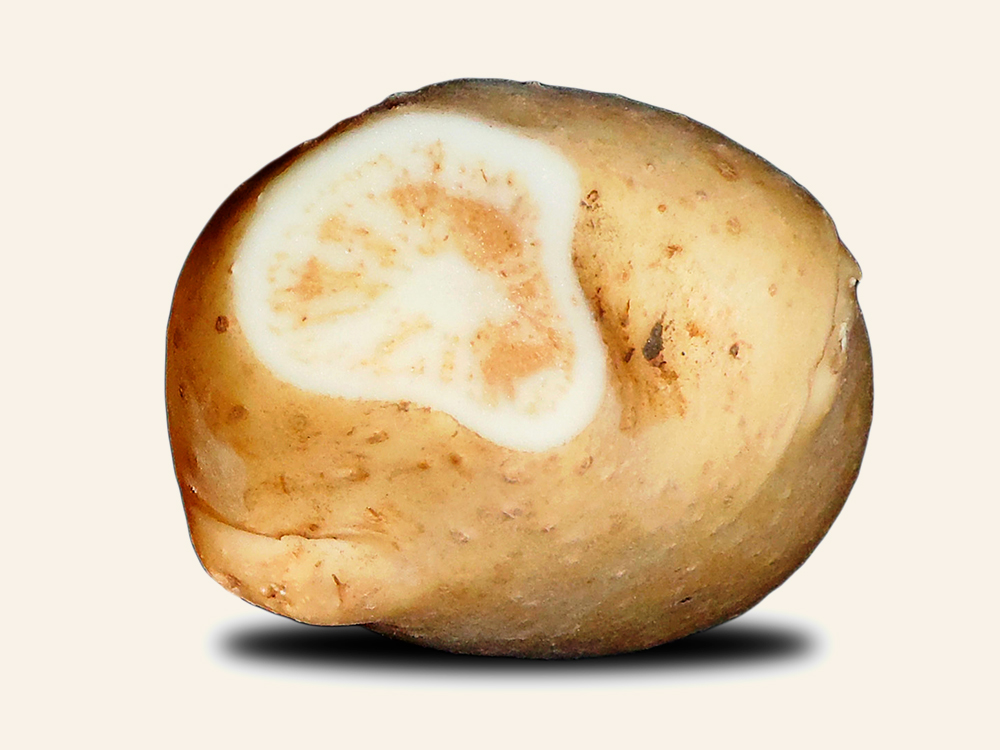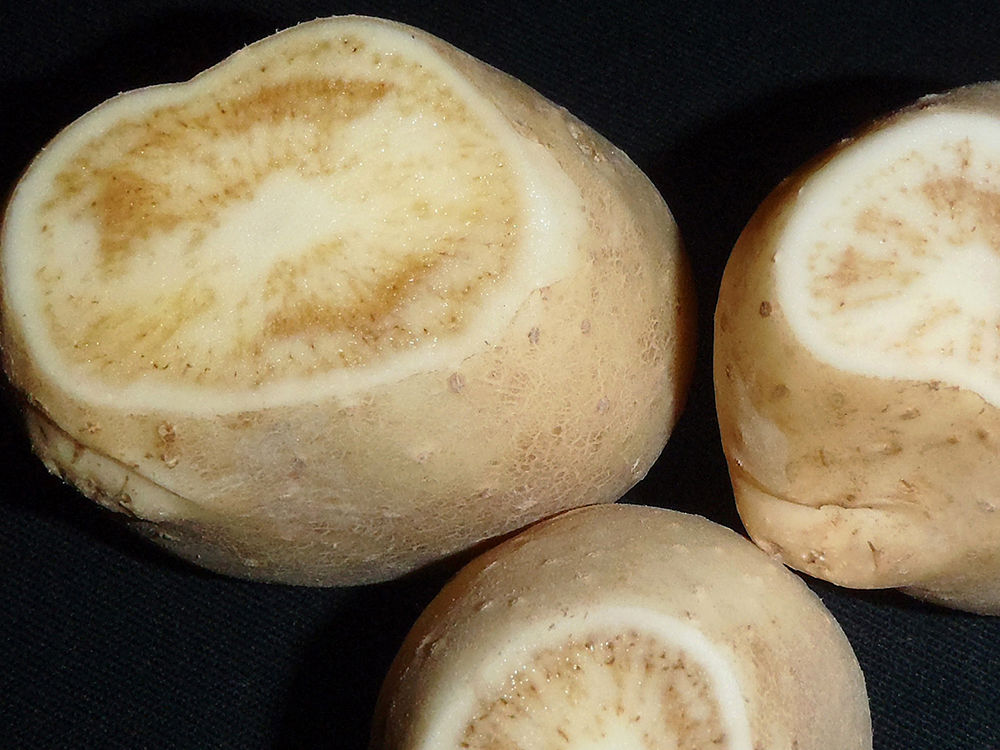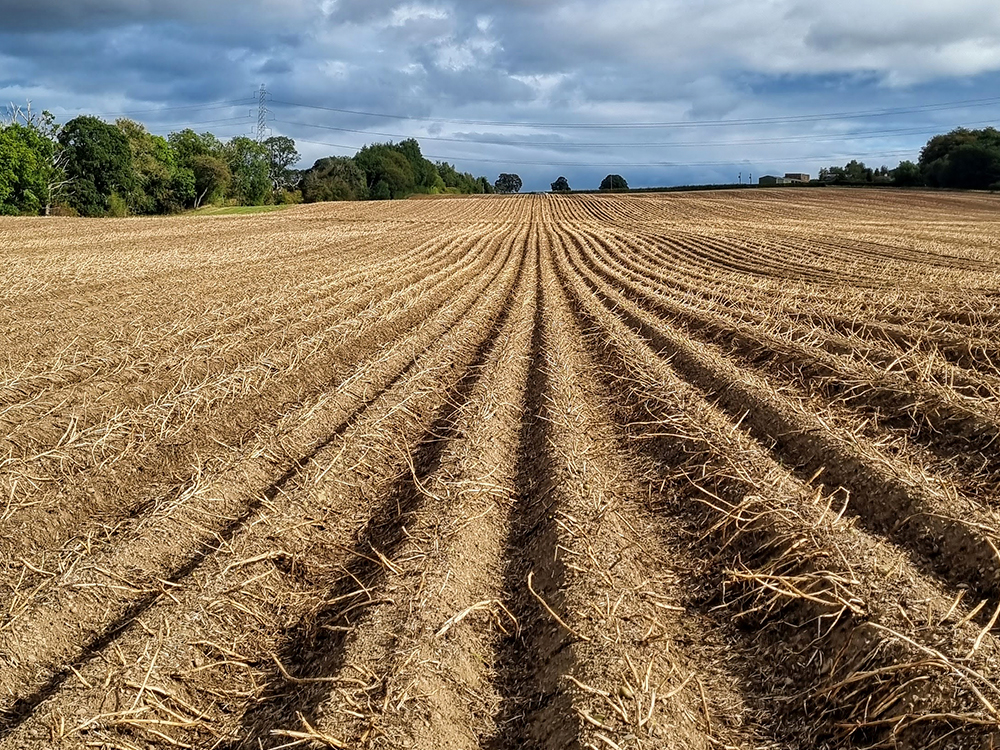ZEBRA CHIP
The Hidden Threat to Our Beloved Potatoes

What is it?
Zebra Chip is a plant disease that affects potatoes and other crops, caused by the bacterium Candidatus Liberibacter solanacearum (CLso). The disease gets its name from the distinctive dark, "zebra-like" striping pattern that appears on the infected tubers.
Zebra Chip is present in the Americas and New Zealand, and it causes significant economic losses, both due to reduced production and loss of quality of potatoes.


Which crops are affected?
CLso has five haplotypes, A, B, C, D, and E, that are known to infect cultivated crops of major economic importance. Haplotypes are specific combinations of genetic variations of the pathogen. Although all haplotypes belong to the same species, each one has slight variations in its genome.
All haplotypes share the same general ''blueprint'', but each one has its own unique traits written into the details.

- Haplotypes A and B affect solanaceous plants (e.g., potatoes, tomatoes, peppers, etc.) in the USA and Mexico. Meanwhile, haplotype A is in Central and South America and in New Zealand.
- Besides, the rest haplotypes have been found to generate diseases in carrot plants (haplotype C) and in other apiaceous plants such as celery, parsnips, parsley, fennel, and dill (haplotypes D and E) in several countries in the EU and countries around the Mediterranean Sea.
- Recently, in Spain, haplotype E has also been identified in potato crops, and it is believed that it may affect other species of the nightshade family, both wild and cultivated.
How is it transmitted?
The transmission of CLso, causal agent of the Zebra Chip disease, is primarily facilitated by the potato psyllid (Bactericera cockerelli), an insect that feeds by sucking off the sap of host plants and spreads the pathogen from infected plants to healthy plants.
If the vector acquires the bacterium, it will transmit it throughout its life and even through the eggs for generations.
Scientific evidence shows pathogen transmission through tuber seed.

What are the main vectors?
The primary vector of CLso, the causal agent of Zebra Chip disease, is the potato psyllid (Bactericera cockerelli). However, other psyllid species transmit the bacterium in carrot, celery, and other apiaceous crops, though they are not as significant as the potato psyllid in the spread of Zebra Chip disease.



Damage caused by Zebra Chip?
Zebra Chip causes significant damage to potato crops, both in terms of plant health and tuber quality. Here are the main types of damage caused:
- The most distinctive symptom of Zebra Chip is the dark, streaky pattern in the potato tubers, resembling "zebra stripes" when sliced. The discoloration is most noticeable after frying. CLso disrupts the normal translocation of sugars, leading to the accumulation of reducing sugars in the tuber that results in dark brown spots in chips and fries. This effect also causes a bitter, off-flavour in the tubers, making them undesirable for consumption.
- Infected plants are often stunted and exhibit poor growth due to the disruption of nutrient and water transport caused by the bacterium located in the phloem. This results in reduced overall potato yield, as both the number and size of potatoes are typically lower on infected plants.
- Above-ground symptoms include yellowing, leaf curling, aerial tubers and wilting. Infected plants may experience premature death, particularly if the infection occurs early in the growing season or when the pathogen comes from the tuber seed.
- The combined effects of reduced tuber quality, lower yield, and the off-flavor make potatoes infected with Zebra Chip unmarketable leading to significant economic losses for growers.
It is important to note that some of these symptoms are not unique to this disease, and it is always necessary to confirm the presence of the bacterium to be sure of the cause.
Measures to reduce the spread of Zebra Chip?
Preventing the spread of Zebra Chip disease involves managing its primary vector, the potato psyllid, and adopting other agricultural practices to limit the disease's transmission. Here are the main strategies to prevent its spread:
Use for planting only certified seed potatoes.
Regularly monitor psyllid populations using traps or visual inspections and test plants for CLso.
In case of suspicion, always report it to the Competent Authorities. The vector is a priority pest (A1 list) in the EU and there is strict monitoring of its presence in the EU.
Immediately remove and destroy any infected plants and tubers to reduce the potential psyllid/CLso spread to healthy plants and other regions.
Use the appropriate plant protection products that are authorized in your country. It’s important to follow integrated pest management (IPM) practices combined with crop rotation to avoid insect resistance to pesticides.
Remove leftover tubers from the previous year's harvest.